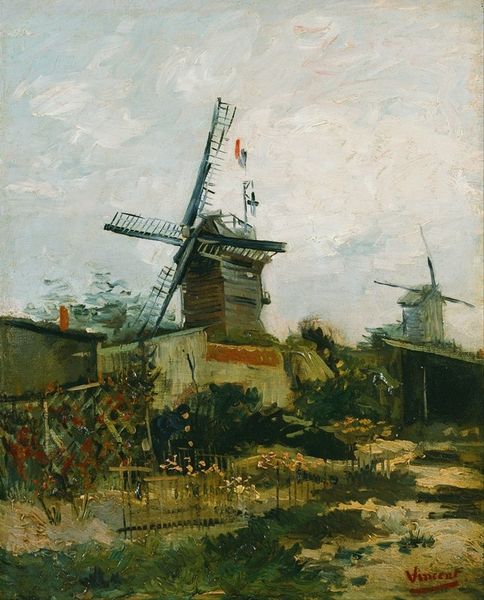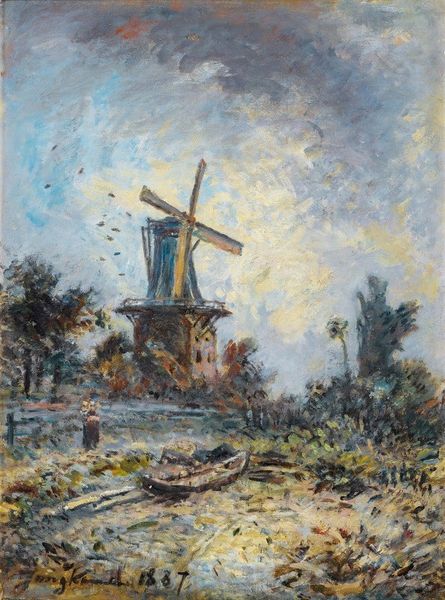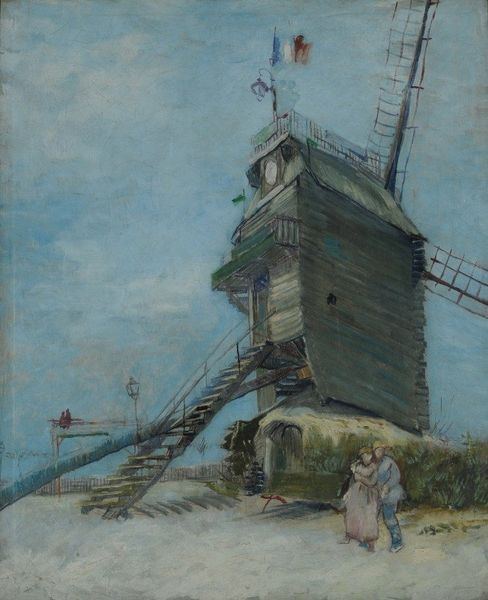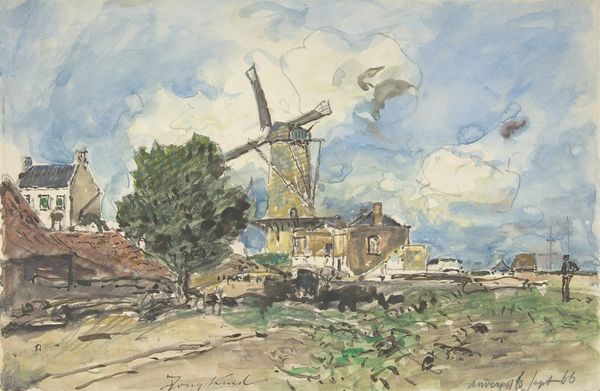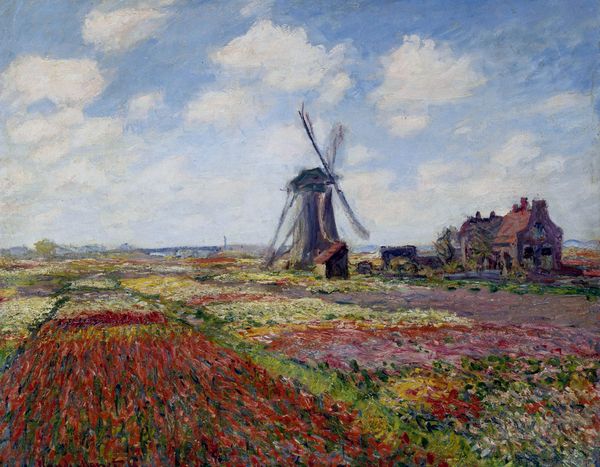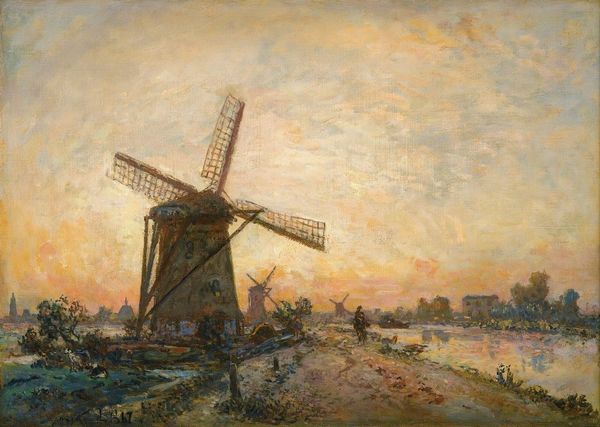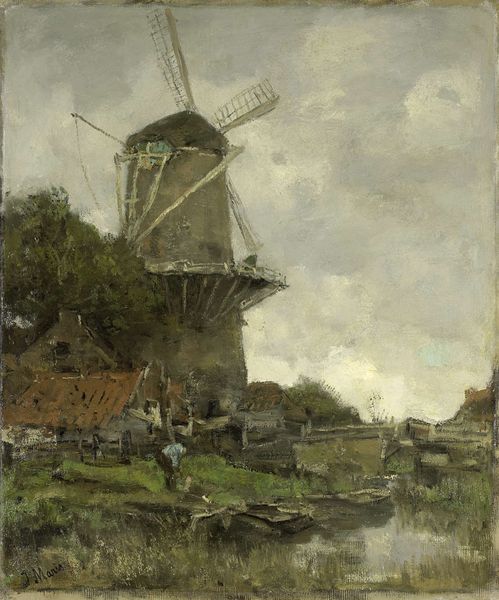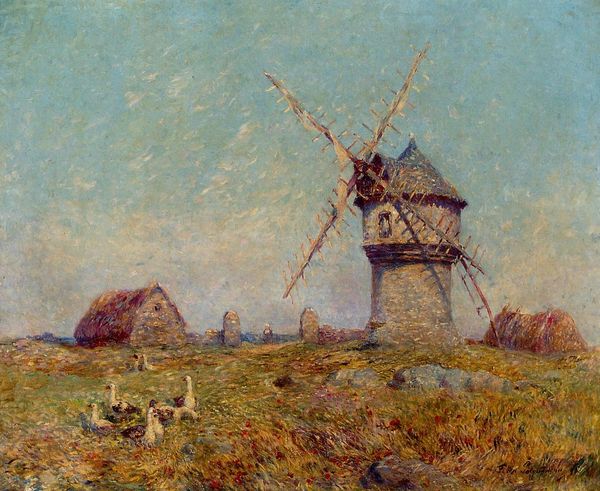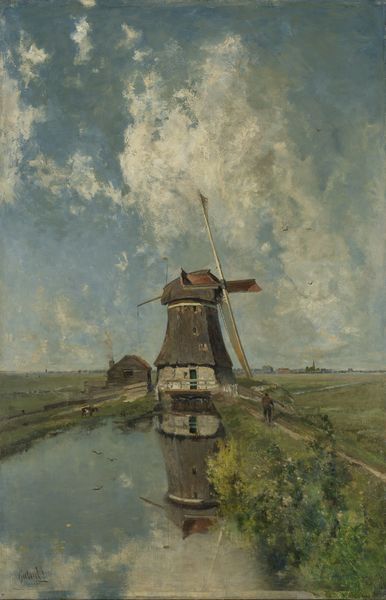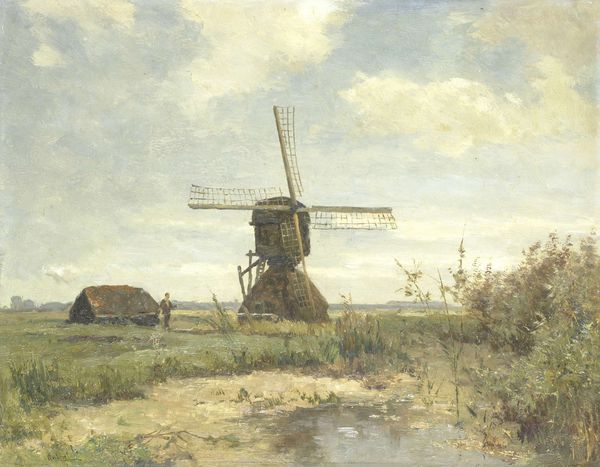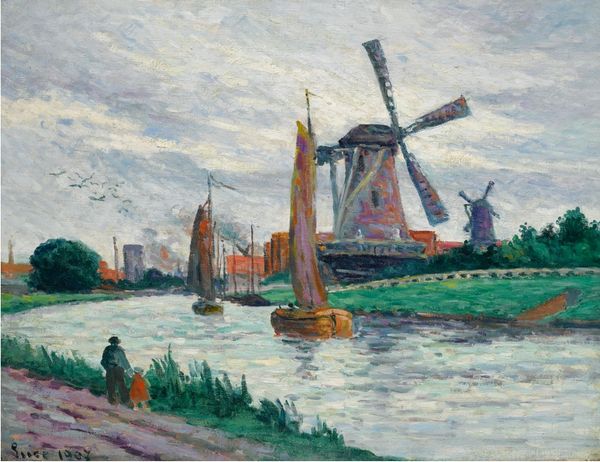
Copyright: Public domain US
Editor: This is "Moulin," painted by Henri Matisse in 1897 using oil paint, and the impasto technique is evident. It gives a very tactile, almost sculptural quality. How might a materialist approach illuminate this painting? Curator: Consider the very act of production. This isn't just a picture of a windmill; it’s about the materiality of paint and the labor involved. The thick application draws our attention to Matisse’s physical engagement with the medium. Where do you see that materiality impacting your perception of the artwork? Editor: Definitely in the foreground; the impasto creates texture almost like looking at thick sediment or something being churned and processed, kind of linking up with the windmill churning. It's not just representing landscape but the active working *of* the landscape, right? Curator: Precisely. Think about the social context of windmills themselves—sources of power, linked to production of flour, grain, energy. By focusing on the 'Moulin', Matisse gestures to those historical industries. What might the bold colors tell us? Are they divorced from real representation? Editor: No, not completely divorced. The greens and yellows suggest a pastoral setting but the reds, are they perhaps symbolic? Are they just highlighting the windmill as the centre of work within that landscape? Curator: Maybe. They might also underscore a potential challenge to conventional landscape painting. He’s using color not just to depict but to construct and even *question* the traditions he’s working within. Consider how later Fauvist works explore those aspects further. How does this painting now stand in relation to the tradition? Editor: That’s fascinating; seeing the materiality and the colors as active choices really reframes how I look at the work! Thanks! Curator: It has also given me a different view. Focusing on how a painting operates changes our relation to it, and gives another life to it.
Comments
No comments
Be the first to comment and join the conversation on the ultimate creative platform.

